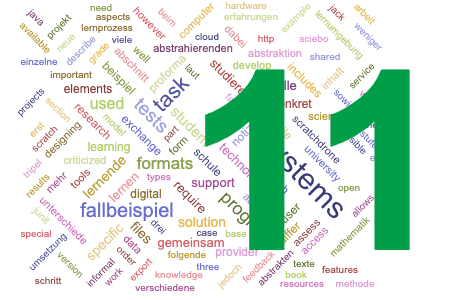Mobile Games for Learning
Schlagworte:
Mobile Learning, e-learning, learning games, patterns for game design, secondary education, serious gamesAbstract
Schüler im Alter von 15 Jahren haben ihr ganzes Leben umgeben von und in Interaktion mit verschiedensten Formen von Computern verbracht. Die Technologie die sie umgibt ist mittlerweile überwiegend mobil und durchdringt fast jeden ihrer Lebensbereiche. Die 12 – 19 jährigen Jugendlichen in Deutschland sind fast alle (88 %) im Besitz eines eigenen internetfähigen Smartphones mit Touchscreen und jeder fünfte besitzt mittlerweile einen eigenen Tablet-PC. Die Mobiltechnologie hält damit auch Einzug in das Klassenzimmer. Und das mit Folgen: Der Ruf nach innovativen und motivierendem Lernszenarien, die sich an den Mediennutzungsgewohnheiten der Jugendlichen orientieren, wird immer lauter. Auf der Bildungsebene kommt langsam ein Paradigmenwechsel in Gang, der die Nutzung mobiler Technologien für das Lernen stärker einbezieht. Lernunterstützende Formen mobiler Technologien umfassen Möglichkeiten zu Partizipation und Kollaboration wie das Social Web sie bietet, oder die Nutzung von Umgebungsinformationen und Kontextualisierung durch Spiele. Diese Arbeit nimmt die Entwicklung mobiler Lernspiele in den Fokus. Sie untersucht, welche Bedingungen und Anforderungen gegeben sein müssen, damit der Einsatz mobiler Spiele lernwirksam ist im Sinne einer Unterstützung affektiver und kognitiver Lernziele. Ausgangsbasis für die Untersuchungen ist der ursprünglich aus der Architekturtheorie stammende Pattern-Ansatz der generativ ist und analytisch die Dimensionen Kontext, Problemfeld und Lösung erfasst. In Übertragung auf bestehende Game-Design Patterns, nutzt diese Forschung Analysen und experimentelle Ansätze, um mögliche Zusammenhänge zwischen Spielmechanismus und Lernergebnis zu identifizieren. Dazu wurden im Rahmen dieser Arbeit eine Reihe von mobilen, lernzielorientierten Spielansätzen entwickelt und im Hinblick auf eine bestehende Lernzielklassifizierungen evaluiert. Neben exemplarischen und evaluierten Lernspielkonzepten sind ein Referenzmodell zur Bewertung von bestehenden Spielansätzen und Evaluationsergebnisse zur Unterstützung zukünftiger Spieldesign-Entscheidungen die wesentlichen Forschungsbeiträge dieser Arbeit.Downloads
Veröffentlicht
2015-03-23
Ausgabe
Rubrik
Dissertationen



